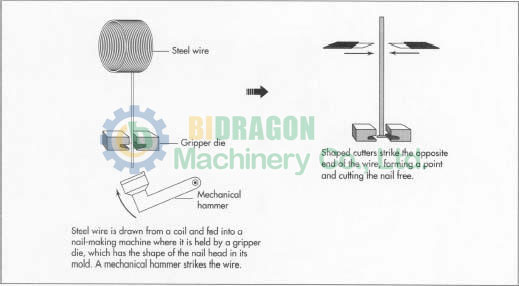
Wire is drawn from a coil and fed into the nail-making machine where it is gripped by a pair of gripper dies. The shape of the head of the nail was depended by the end of the dies.
While the dies clamp the wire in place, the free end of the wire is struck by a mechanical hammer. This deforms the end of the wire into the die cavity to form the head of the nail.
With the wire still clamped in the dies, a set of shaped cutters strike the opposite end of the nail, forming the point and cutting the nail free from the rest of the wire coming off the coil.
The dies open and an expelling mechanism knocks the nail into a collection pan below the machine. The free end of the wire is drawn from the coil and fed into the machine. The cycle then begins again.
Additional process
Nails with helical twists, serrations, or other surface configurations are fed into other machines that roll, twist, stamp, or cut the required forms. This may be a purely mechanical process or may require heating the material before forming.